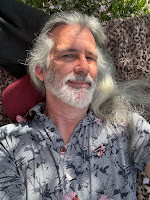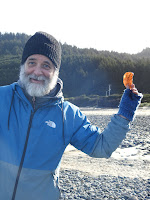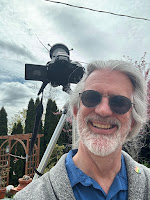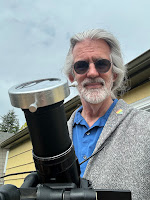“Psychic Witch” is not a book about starting or working within a group or coven. There are references to Wicca, other Neopaganisms, and ceremonial magick, but the author’s witchcraft is more centered on solitary trance work and folk magic. While the author identifies as a gay man, the subject matter is aimed at a general audience (sorry, no Sex Rituals of Gay Pagan Men here; this isn't a work by Storm Faerywolf).
Books like “Psychic Witch” are often compared to Dion Fortune’s “Mystical Qabbalah,” which is grounded in early 20th century British magical theory and colonialism, or Starhawk’s early works, which are grounded in Goddess-centered alternatives to the patriarchy (and Ronald Reagan). My impression of “Psychic Witch” is that it is an introductory text drawing mostly from later Neopagan (and New Age) authors, such as Raven Silverwolf and Christopher Penczak.
The book’s chapters have a web article feel. Some chants and spells have awkward scansion; but not as egregious as other recent Llewellyn books I’ve read, and at least there’s an attempt at more complex meter. I’m sorry to say that the binding of the softbound Llewellyn edition I purchased was of poor quality and the book began shedding pages after five days of a first reading.
The opening chapters introduce the reader to Auryn’s cosmology. He makes a distinction between psychics who perceive spiritual energy (e.g. through clairvoyance) from the higher self, witches who affect subtle energy (e.g. through casting a spell) via the lower self, and psychic witches who do both (this implies mundanes do neither). There’s a few passages which hand-wave about “discernment” and “energy,” with statements about reality being energy and subtle energy being information. There is also some light review of brainwaves and the pineal gland which make the science fiction writer within me wince. The end thesis is the pineal gland is a psychic Witch Eye which is a key organ for working with and powering magical operations—this is a more focused version of the theory that the chakras are magical energy centers centered over or connected with various endocrine system glands.
Auryn writes, “Magick is the manipulation of subtle energies in a specific manner to influence a desired result.” Although it’s a modern rewording of “actions performed within the astral plane have their effects upon the material plane,” it seems more physics-justified than Aleister Crowley’s definition, “Magick is the Science and Art of causing Change to occur in conformity with Will;” Dion Fortune’s, “Magic is the art of causing changes to occur in consciousness, in conformity with will;” or Starhawk’s combination of “Magic is the art of changing consciousness at will,” and “A spell is a symbolic act done in an altered state of consciousness, in order to cause a desired change.”
While there are some other science and technology references to “downloading (spiritual/psychic) information” elsewhere, for the most part this feels less an attempt to give his system a science pedigree and more an attempt to offer physical, physiological, or cognitive behavioral explanations for why meditation and concentration are foundation skills to build upon. My only critique of using Science Says arguments is that Auryn writes that the subtle energies used in magick cannot be physically measured—which means Science can say nothing about them. Dion Fortune gets around studying the unmeasurable by making a distinction between natural science and occult science. To his merit, Auryn doesn’t use the words quantum or entanglement; although he does use the word fractal in some explainations.
Early chapters focus on various mediation, concentration, affirmation, and visualization techniques. These are used to perform standard grounding and centering exercises from the Western European twentieth century magical tradition. Extrasensory perception is explored with suggestions for seeing auras or hearing spirit allies. Standard purification and shielding techniques are built on top of the development of subtle perception.
Auryn introduces the concept of the triple souls in chapter 6. Drawing from the Irish poem, “The Cauldron of Poesy,” he builds an integrated world and body view. A person has a Higher, Middle, and Lower Self; these in turn are connected to a corresponding Higher, Middle, and Lower (or Under-) Realm. The selves and realms form the underpinning of an introductory text on standard 20th century reincarnation belief. This belief is that the higher self in the higher realm (possibly the astral plane), connects with a lower self (your shadow self or “Sticky self”) from the underworld (with references to Jung, the collective unconscious, “earth energy”, and ancestral memory), to create a temporary physical body, the middle self.
Subsequent chapters explore the lower and higher selves with an aim to connecting with and making conscious the shadow or id elements of the lower self, and with connecting with the true or divine will of the higher self. The ultimate goal is to bring the views of the lower, middle, and higher self into aligned focus and achieve a powerful altered state of conscious. In this exalted state a psychic witch can perform (healing) spells. Auryn pauses a moment to extol readers to act from a place of service and (Starhawkian) power-with instead of power-over.
Chapter ten explores the creation of sacred space, or the magic circle. Chapter eleven introduces the five Platonic elements earth, water, fire, air, and spirt/ether (which Auryn calls “quintessence”). Chapters twelve and thirteen revisit the realms in terms of subtle (unrecordable) energy, and launch into simple astrological meanings of classical planets—the Sun through Saturn. After an introduction to one’s body’s aura, chapter fourteen assembles the concepts of the previous chapters into a technique for mediation/spell casting which starts with a foundation of the physical and works to bring successive selves, bodies, and realms into focus on the same goal.
Chapter fifteen is a series of spells or “magic tricks.” This chapter comes close to “Prosperity Check” territory. While there isn’t a Spell To Get a Parking Spot, there is a “Money Magnet Multiplier” spell which involves drawing the glyph for Jupiter onto a dollar bill during a waxing moon (repeatedly, if necessary). I suppose that this isn’t all that different from complicated sixteenth century spells to summon beings of extraordinary knowledge and ask them, not what the true nature of solar fire (nuclear fusion) is, but rather where the nearest buried treasure lies—or even standard prayers for protection, health, love, and prosperity. While elsewhere Auryn mentions the practical aspect of spells needing the witch to work toward desired results (e.g. hitting the pavement and handing out resumes in addition to staring at a green candle for money), the wheedling charms in this concluding chapter leans toward the more superstitious and self-serving end of folk magic.
As an introductory text, Psychic Witch is a wide-ranging guide for secular-leaning, solitary practitioners new to spell-casting and folk magic (as opposed to, say, someone on the path of a priest or priestess of a Gardnerian Wiccan coven). Its strength is that it starts with basic foundational techniques and instructs the reader to practice, practice, practice.
















